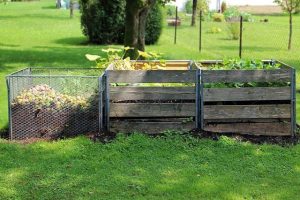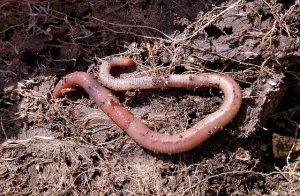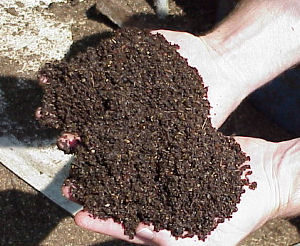 Having a compost bin is a fantastic way to convert yard waste and vegetable kitchen scraps into a great soil amendment and keep organic material out of landfills.
Having a compost bin is a fantastic way to convert yard waste and vegetable kitchen scraps into a great soil amendment and keep organic material out of landfills.
Winter composting
Colorado winters make it hard to keep backyard compost piles active. But that does not mean you cannot still compost during the colder months. It is best to remove most of your finished compost at the end of the summer. That way you will have a nearly empty bin for your fall yard waste.
Adding finished compost
- Finished compost can be added to your garden in the fall or wait and add it in the spring
- Adding the finished compost in the fall
- Wait to incorporate it until the spring
- This acts like a mulch covering any bare soil over winter
- Continue to add kitchen vegetable scraps to the pile throughout winter
- Push aside the snow and cover the scraps with a brown layer (aka carbon source)
- such as fall yard waste, leaves, or dried grass clippings
- Push aside the snow and cover the scraps with a brown layer (aka carbon source)
You can also keep your scraps in a trash can outside during winter and then add them to the pile with the fall yard waste in the spring. In the spring turn the pile and mix in fresh materials.
Vermicomposting
- Try your hand at vermicomposting over winter

- Vermicomposting, is simply using worms to recycle food scraps and other organic material into a soil amendment
- To retain heat, do not turn your pile after December, November in the mountains
Materials to use
Bins made out of a more insulating material such as wood will also help prevent heat loss and keep the pile active longer into winter. Larger piles will retain heat better and stay active longer as well. Consider placing hay bales around the pile to add extra insulation for winter. If you live in an area that does not receive much snow and the pile is not covered by snow most of winter then you will want to make sure the pile does not dry out.
snow most of winter then you will want to make sure the pile does not dry out.
Moisture of pile
Your compost pile should be moist but not soggy; if you take a fistful of your compost, it should feel like a wrung out sponge and you should not be able to squeeze out any water. Water the pile if it feels too dry on a day that is above 40℉ but make sure not to over water because you do not want the pile to freeze and halt the microbial activity. You can also keep the compost pile covered with a layer of cardboard to help keep in moisture but that is not necessary if the pile is covered in snow.

